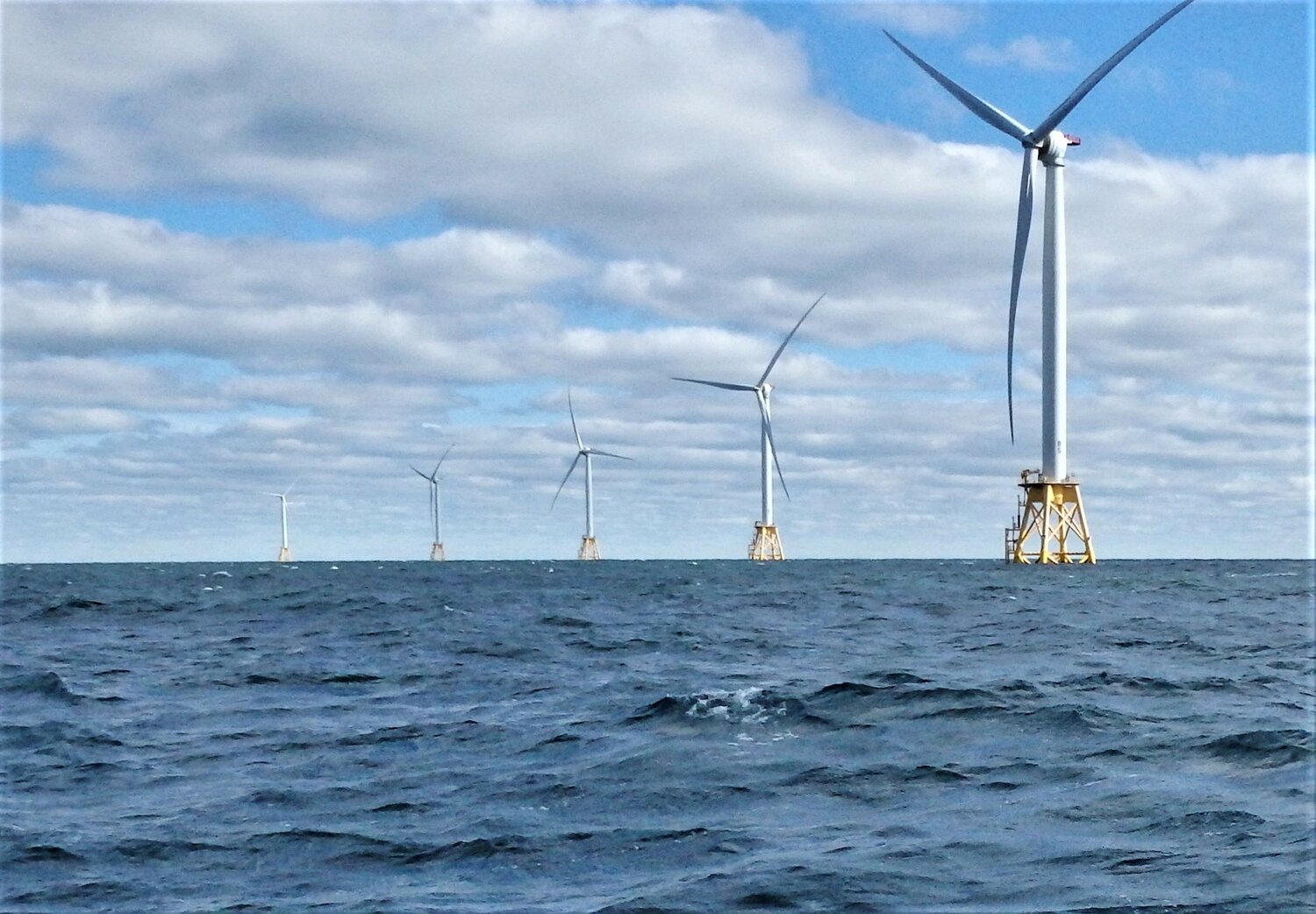Measuring impacts of offshore wind farms on recreational fishing
The University of Rhode Island Graduate School of Oceanography held an online seminar last Wednesday, titled “Recreational Fishing and Offshore Wind Energy: Understanding the Changing Behavior.” About 90 people attended the two-and-a-half-hour online seminar, which will be followed by an in-person workshop in the near future.
Online seminar organizer Jennifer McCann, director of U.S. Coastal Programs at the Coastal Resources Center, URI Graduate School of Oceanography and director of Extension Programs for Rhode Island Sea Grant, who kicked off the online seminar, said, “We are here to identify ways of understanding the impact and changes in recreational fishing behavior due to offshore wind energy.”
Highlights of the meeting included studies that used data that is in existence today as well as an angler survey that plotted on a nautical chart angler fishing hot spots.
Scott Steinbeck, a NOAA Fisheries economist, shared his study that utilized the database of an angler smartphone fishing application called FishID to identify what was being fished for in wind farm lease areas.
Steinbeck is in the process of exploring subsequent studies that also utilize the recreational fishing application FishBrains, which provides photos of your catch, interacts with social media, providing data on existing conditions when your fish was caught, i.e., tides, seas, winds, temperature, etc.
The data delivered by a second study using FishBrains promises to be very exciting, particularly if it can help calculate the species and extraction rate of fish caught inside and outside of wind farm areas.
Jeffrey Kneebone, Senior Scientist, Fisheries Science and Emerging Technologies Program at the New England Aquarium, reported on his work that analyzes historical data on Highly Migratory Species (HMS) such as sharks and tuna to identify what species and the number of fish that are being caught in and out of wind farm areas. The beauty of his study approach is that it can be replicated every day, month and year using existing data that anglers are required to report as a condition of their HMS permit.
When asked about the future of his study approach Kneebone said, “We are not funded to do this work moving forward. We have the ability to do it but need funding to continue this work.”.
A third study produced by the URI Coastal Resources Center on behalf of the Rhode Island Coastal Resources Management Council charted responses from 300 anglers on areas they fished. The study is being used to avoid conflicts early in the development process between fin fishers and aquaculture farm lease area. The hope is that the study approach can be used offshore to explore potential conflicts between anglers and offshore wind farm lease areas.
The concern expressed at the workshop by some participants was will there be enough anglers and fishing trips to use the same somewhat random approach, i.e. participants filling out surveys at fishing shows and access points? Also, will the study be able to show if more or less anglers are fishing the windfarm area over time?
“We are also using the URI/ CRMC study to show anglers new to fishing where hot sports are to enhance their fishing experience,” said Scott Travers, executive director of the Rhode Island Saltwater Anglers Association, a study partner.
It is clear to me that no one study approach is going to give us the answer about who fishes in wind farm areas, what they catch, and if they are making more trips, fewer trips, catching more fish or less fish due to the construction of a wind farm. But rather it will likely be a combination of studies that will paint a picture as to what is happening to private recreational fishing in wind farm areas.
Details on key seminar learnings and discussions that followed will be posted on the URI Coastal Resources Center website once they are processed. More to come on this initiative as it develops.
Striped bass regulation set
The Atlantic States Marine Fisheries Commission (ASMFC) that regulates striped bass regulations coastwide approved Addendum II to Amendment 7 to the Interstate Fishery Management Plan for Atlantic striped bass at its winter meeting on Jan. 24. See the full Addendum at 65b27f9aPR02AtlStripedBassAddendumII_Approved.pdf (asmfc.org) . The Addendum means a continuation of the 28” to 31”slot limit with a one fish/person/day bag limit like last year.
Most commenters at the meeting favored ocean Option B (28-31” all modes). Commenters noted this option is the most conservative option with the highest estimated reduction, which is needed to support stock rebuilding.
In a post on their website the American Saltwater Guides Association said, “This option would best protect the 2015-year class, particularly considering recent low recruitment and the lack of upcoming strong-year classes. Most commenters noted specific, strong opposition to any mode split options. They noted the entire recreational sector should have the same regulations and participate equally in rebuilding the stock. They also noted that all recreational anglers should have the same fishing opportunity. Some comments expressed concern that even the most conservative options would have a less than 50 percent chance of rebuilding the stock.”
Where’s the bite?
Freshwater fishing in stocked ponds for trout and salmon continues to be good. For a complete list of trout stocked ponds in Massachusetts visit Mass Wildlife at Trout stocking report | Mass.gov and in Rhode Island visit www.dem.ri.gov/fishing, or call 401-789-0281 or 401-539-0019 for more information on trout stocking.
Dave Monti holds a captain’s license and charter fishing license. He serves on a variety of boards and commissions and has a consulting business focusing on clean oceans, habitat preservation, conservation, renewable energy, and fisheries related issues and clients. Forward fishing news and photos to dmontifish@verison.net or visit www.noflukefishing.com.






